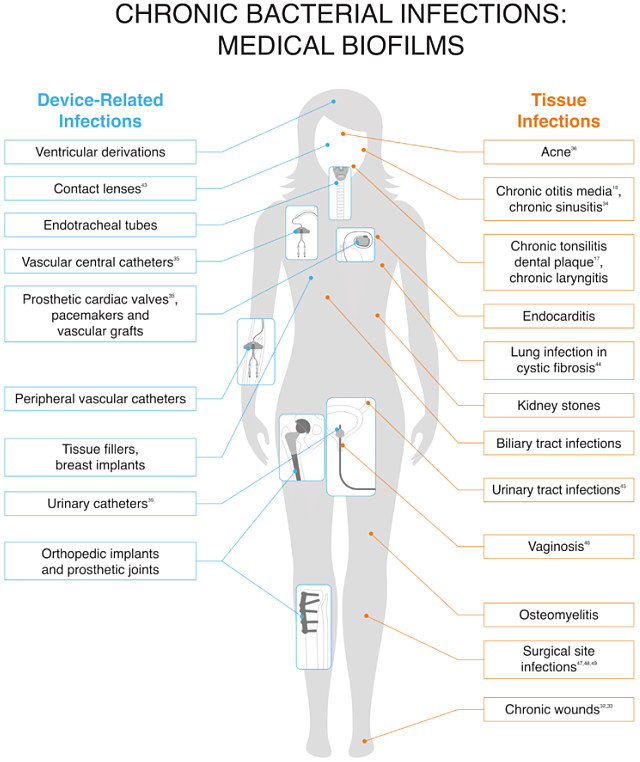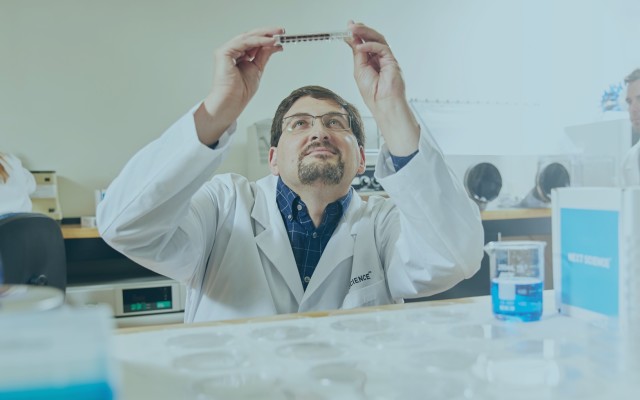Next Science gears up for ASX debut with product arsenal against antibiotic resistant bacteria

Next Science has tapped into the antibiotic resistant bacteria market with its technology proven effective against Golden Staph.
One of this year’s most notable IPOs has been Next Science (ASX: NXS), with the company’s significantly oversubscribed offer closing in just three days – foreshadowing investors’ faith in its already Food and Drug Administration approved Xbio technology for treating chronic infections, including those caused by antibiotic resistant bacteria.
As Next Science prepares for its 18 April ASX debut, investors swarmed to secure a slice of the company’s commercialised chronic wound treatment technology during the offer, which raised $35 million via the issue of 35 million shares at $1 each.
Funds raised from the offer will be allocated towards rolling out Next Science’s available products globally and developing the other numerous promising products in its pipeline.
Next Science has developed a non-toxic technology that can treat chronic wound infections including antibiotic resistant infections like Golden Staph.
What is a biofilm?
Speaking with Small Caps Next Science managing director Judith Mitchell said the company’s technology works by destroying biofilm-protected bacteria, which is the cause of numerous chronic infections associated with wounds, middle-ear, sinusitis, implant and catheters – to name just a few.
She said millions of people around the world are affected by biofilm-based infections, which not only cost healthcare systems millions, but can often be fatal.
“Our technology is the ability to breakdown a biofilm. A biofilm is a matrix that is excreted by bacteria that allows different bacteria to live together along with some fungus and spores in there as well. It is effectively an impenetrable bomb shelter over the top.”
“Antibiotics do not penetrate a biofilm.”
“In chronic sinusitis, you can be taking antibiotics and you may reduce the symptoms, but you might not ultimately get rid of the infection, so it comes back – because the biofilm is basically protecting it.”

She said this was the same for chronic wounds and implants.
“Ultimately, we will reduce the community’s reliance on antibiotics, which means we will reduce the amount of resistance in the community. People won’t need to take so many antibiotics and antibiotics for other systemic issues may have a better effect.”
“The other major advantage for our product over some of the other things that exist already in various disciplines is that we do not discriminate between gram positive or gram negative bacteria or fungus – so you don’t need to know what the bacteria is, you just need to know something is there,” she explained.
Commercialised products
According to Ms Mitchell, one of the major appeals of Next Science to investors is the fact the company is already generating revenue from its commercialised products in the US.
She pointed out that those products would also move into other markets such as Australia, Europe and Japan once the company secures the regulatory approvals for these regions.
Bactisure
The company’s latest product, which was launched in the US, was a non-toxic open surgery wash called Bactisure.
“You use it in open surgery to eliminate all the biofilm and it will take out the bacteria, as well as any fungus and spores,” Ms Mitchell said.
The product is effectively washed into the open surgery wound and then washed out with saline.
“It is a very strong product. We get a complete kill in about 15 seconds.”
Ms Mitchell added the bacteria is unable to develop a mutation to resist the Bactisure treatment.
To-date about 30,000 patients have now been treated with Bactisure, which has been predominantly used in hip and knee replacement procedures.
However, it has also been used in breast and cardiac operations – anywhere where there is a concern about existing infection in open surgery.
Orthopaedic implant company Zimmer Biomet has been selling Bactisure in the US since March 2017.
BlastX
The company’s other product currently sold in the US is a wound gel called BlastX.
“This is a topical gel that takes out biofilm and allows chronic wounds to heal,” Ms Mitchell said.
“If you think about the people you’ve seen with diabetic foot ulcers, or elderly skin tears that never heal, we can introduce our product into the treatment cycle. If it is introduced early when a patient first presents, we will shorten that cycle.”

Since the product has been used in the US, primarily in veterans affairs, Ms Mitchell said Next Science has received “it’s a miracle” feedback.
Sales of BlastX began in 2017, however, Next Science partnered with 3M at the start of this year, with the company now responsible for distributing the product.
Close to market
In addition to Bactisure and BlastX, Next Science has two more products it is taking to market this year.
“Our first product is SurgX, which goes onto a wound that is stitched. It is like an insurance to make sure bugs don’t go into the wound.”
Ms Mitchell said SurgX was great for people going back into military action or travelling on a plane where is healing is slowed down.
“It is also ideal in any patient with a compromised immune system so diabetic, immunosuppressed, cancer sufferer etcetera.”
To-date, Next Science’s first customers for SurgX have come from the US Department of Defence.
SurgX has been sold in the US since October 2018, however, the company is now seeking a partner to take SurgX to the global market place.
Ms Mitchell noted Next Science’s other near to market product is a different type of wash.
“Unlike the first wash, this wash, which we call TorrentX, can be used by anybody and can instantly get rid of any bugs on the skin’s surface and any biofilm.”
“It has applicability in any injury situation.”
Ms Mitchell said Next Science is currently negotiating with several companies to include TorrentX in various applications.
Initial sales of TorrentX are anticipated before the end of the first half of 2019.
The answer to acne
Another near to market product which is scheduled for distribution in Australia is Next Science’s acne treatment.
Ms Mitchell pointed out that acne was a biofilm.
“We actually have an answer to acne,” she said.
“We are in negotiations with a few companies including an Australian-based cosmeceutical brand, which is looking at using the technology in a problem skin application.”
Pipeline
Looking at the potential for each of these products, which have undergone clinical trials and received the majority of regulatory approvals, Ms Mitchell said the market was “enormous”.
She added that the products currently in the pipeline offer an even bigger future than the current market-ready washes, gels and treatments.
“We have a really rich future and long pipeline, because we keep tripping over places where we can help people with our technology.”
One potential life-changing application is in treating the biofilm that results from lung infections in cystic fibrosis sufferers.
“Right now, we are in the Woolcock Institute in Sydney looking at if we can take down the biofilm that goes into the lungs when you get cystic fibrosis.”

Next Science is investigating a way to break down the biofilm in lung infections using its technology.
However, the challenge for treating a biofilm in cystic fibrosis is that the current products come in liquid or gel form.
“We have to physically touch the biofilm to get rid of the infection. It is a physical action that happens.”
As a result, Next Science is attempting to develop a way its technology can be used to treat the biofilm in these patients.
Some other products Next Science is looking to commercialise include those that can mitigate or cure chronic sinusitis, middle ear infections, kidney stones, urinary tract infections, endocarditis and chronic tonsillitis.
Strategy and opportunity
In order to get the life-changing treatments rapidly into global markets, Next Science’s strategy is to find the right partners to market and distribute the products.
To-date, around 80,000 patients have now been treated with Bactisure and BlastX in the US.
In order to achieve this, Next Science partnered with Zimmer Biomet, which distributes Bactisure and, more recently, with 3M to sell BlastX.
“We are starting to make a difference.”
Commenting on the potential market value for Next Science’s products, Ms Mitchell said it was “unquestionably billions”.
However, she cautioned it comes down to how the company gets there, how fast it takes to educate people on the biofilm aspect and then how well the company’s partners do at marketing and distribution of the products.
Ms Mitchell pointed out that the market leader antimicrobial in chronic wounds, which is not effective against biofilm, generates around $200 million a year.
“If you look at the actual opportunity in Australia, alone, we have 430,000 people with chronic wounds at any point in time. It costs the country $2.6 billion to treat these patients.”
Globally, the chronic wound care market was estimated at US$13.7 billion in 2016.
In the US, about 6.7 million people were believed to suffer from chronic wounds costing the country around US$50 billion a year to treat.
“We see we can help reduce that expenditure everywhere if we can get our technology situated into the standard of care in wound care.”
“We think we can take about 20-30% off the global cost of helping these patients.”
She added that the technology would also reduce the high rate of mortality in patients with chronic wounds that refuse to heal.
Driving the path to success
Guiding Next Science’s path to success is a strong and experienced ASX-qualified board.
Ms Mitchell noted the company’s board possessed experience in navigating the governance process and a breadth of knowledge and involvement in the health industry.
Additionally, the company’s original funder property tycoon Lang Walker has kept his backing and is retaining a substantial 42.1% stake.
The inventor of the technology Dr Matthew Myntti will also retain his exposure in the company with an 11.53% holding.
Since commercial sales began in 2017, revenue has steadily risen, with Next Science achieving more than US$2 million during the second half of 2018.
“We are already in revenue. We’ve shown we can get through the regulator. We’re in the US. We just finished our first European submission, with two or three products to be available in Europe this year,” Ms Mitchell commented.
She said the company was also planning to launch in Australia and Canada within the next 12 months.
“Then we are targeting Japan, Latin America, China and so on.”
“We have enormous growth in our existing products and then we have the new pipeline,” Ms Mitchell added.
